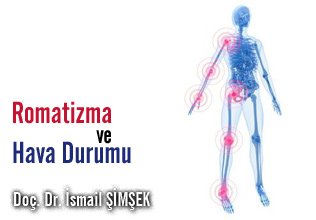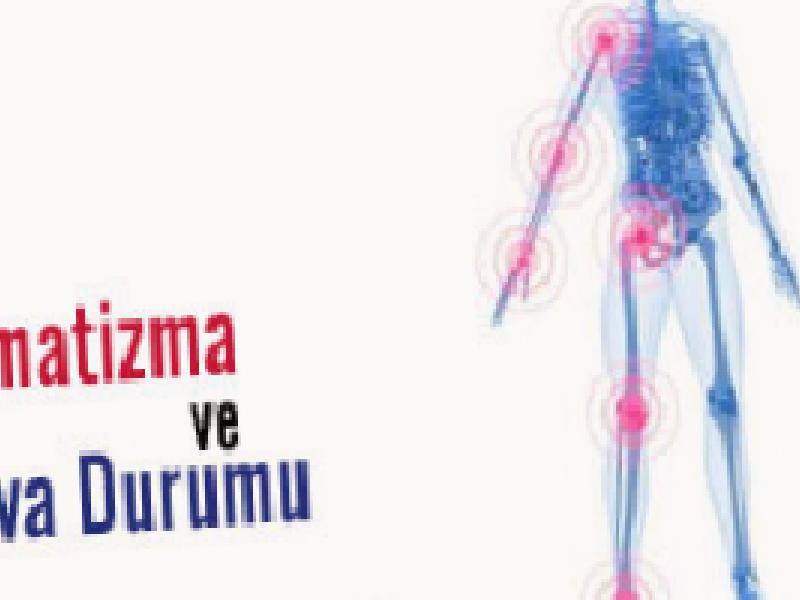
Something I heard frequently before I became a rheumatologist or even a doctor, patients with rheumatism express that their pain increases in “rainy or bad weather”. After I became a rheumatologist, of course, I heard these words more often. In fact, sometimes when I told people I didn’t know but asked what I was doing that I was a rheumatologist, I was a little surprised when the first sentence they uttered with a serious expression on their faces was “Hmmm…my knees will know it’s going to rain”.
I’m sure if you’re sick and reading this article, you’re also “surprised” why I’m surprised. Indeed, from the patients’ point of view, this event is very natural and it is not understandable that we doctors would have difficulty in understanding such a natural event. When viewed by doctors, the relationship between weather conditions and rheumatic pains is somewhat controversial.
My personal view on this issue (not based on a scientific basis) can be summarized in 2 articles; 1- If so many people (from different nationalities, different cultures, different socioeconomic groups) make such a claim, there is a real possibility that there is a relationship (not necessarily a cause-effect relationship), 2- Even if there is such a relationship, it is necessary to turn this situation in favor of the patients. there’s not much you can do (except living in a constantly dry and hot climate). The interesting thing is, there isn’t much work done to clarify this issue.
Based on this situation, researchers investigated the relationship between rheumatic (musculoskeletal) pains and weather conditions in Northern England (it was probably chosen especially for plenty of rain!). The study is essentially a survey study. It should not be called a survey, the study has a very good design. The study was conducted on 2761 patients aged between 25 and 65 registered in 3 family medicine units in a particular region. After obtaining the necessary permissions, a questionnaire was sent to the patients, and they were asked whether they had pain in the past month and, if so, the characteristics of the pain (pain classified as “daily pain” and “chronic widespread pain”). After these questions, the patients were asked whether they had pain that day (the day they answered the survey questions). On the other hand, detailed weather information such as temperature, humidity, amount of precipitation, and how many hours of daylight were obtained from meteorology. The same procedures were repeated twice, both in the first and in the fourth year.
41.5% of the respondents reported that they had daily pain (short-term pain), and 15.3% reported that they had chronic widespread pain (CSF). It was observed that both types of pain were reported mostly in winter, followed by autumn and spring months with decreasing frequency. Compared to winter, it was observed that there was a 27% reduction in daily pain and a 57% reduction in BFA in summer.
A relationship could not be shown with precipitation and air pressure.
The strongest relationship with pain was found between daylight duration and air temperature. So the longer the daylight is there and the hotter it is, the less the pain. If you need to go into detail; There is sunlight for at least 6 hours a day and if the air temperature is above 17.5°C, a significant reduction in pain is observed.
In addition to the above questions, researchers sought answers to some very crucial questions (to reveal other reasons that would explain the relationship between weather and pain, and therefore to understand whether this relationship is a cause-effect relationship). These questions also changed the direction of the results of the study.
So,
1- It was observed that if the sleep quality is good and the daily exercise time is high, the amount of both pain decreases
2- the people who filled the questionnaire on sunny and hot days had higher sleep quality and exercise time.
In other words, it has been revealed that the observed relationship between weather conditions and pain may be related to factors such as sleep quality or exercise duration, rather than the weather itself. When corrections were made for these factors at night (this is a somewhat quick mathematical operation), it was observed that the strong relationship between the air temperature or the duration of daylight and the pain weakened considerably.
As a result, there seems to be no causality in the observed relationship between weather conditions and pain. If you are asking what is the practical meaning of this, let me explain the situation with a question that patients ask a lot.
Question _ “Should I move to a city with less humidity and a warmer climate to relieve my pain?’
Reply _ “No, you don’t need to move at all, instead find a way to exercise no matter how bad the weather is and ask your doctor for help solving sleep problems.”

